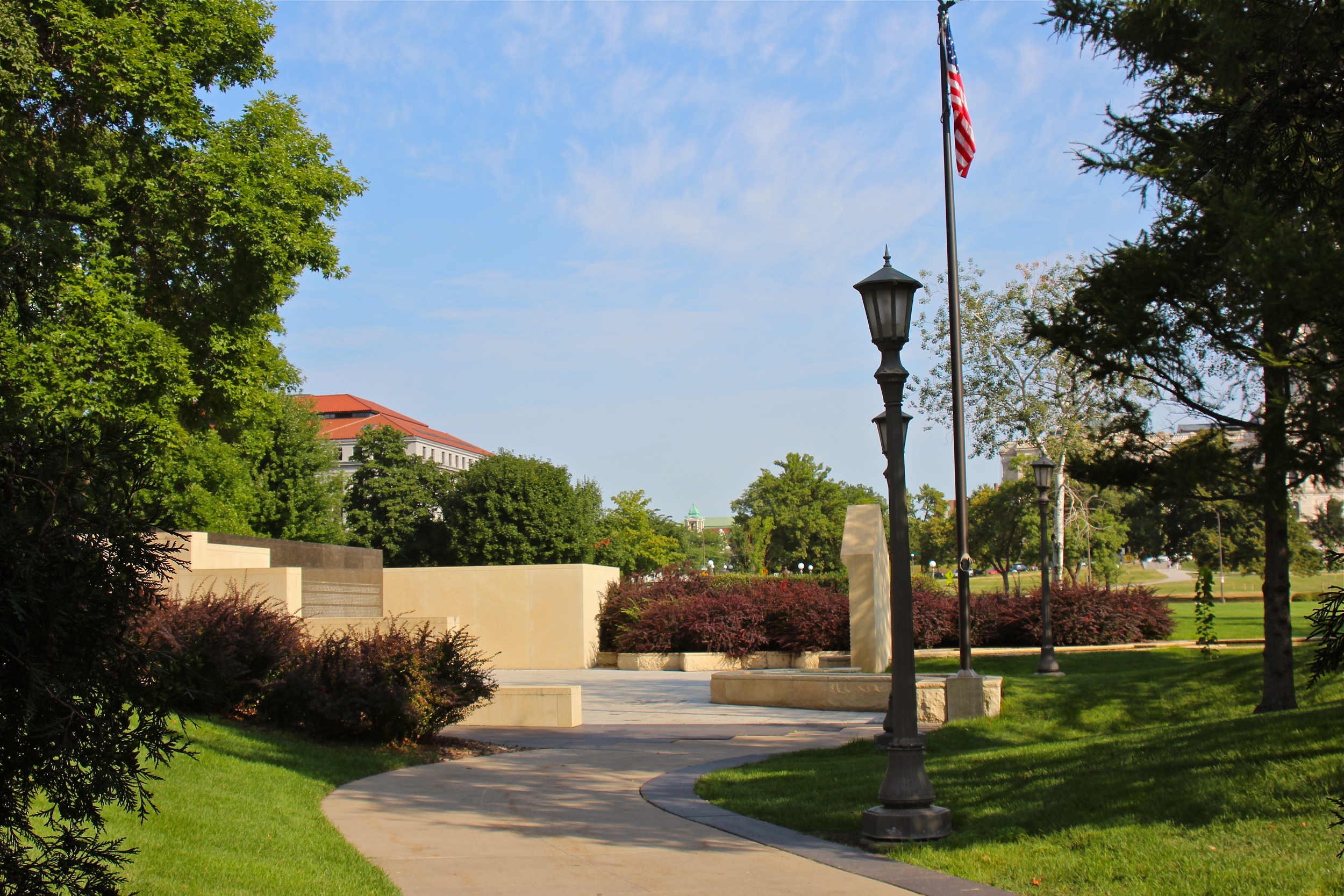
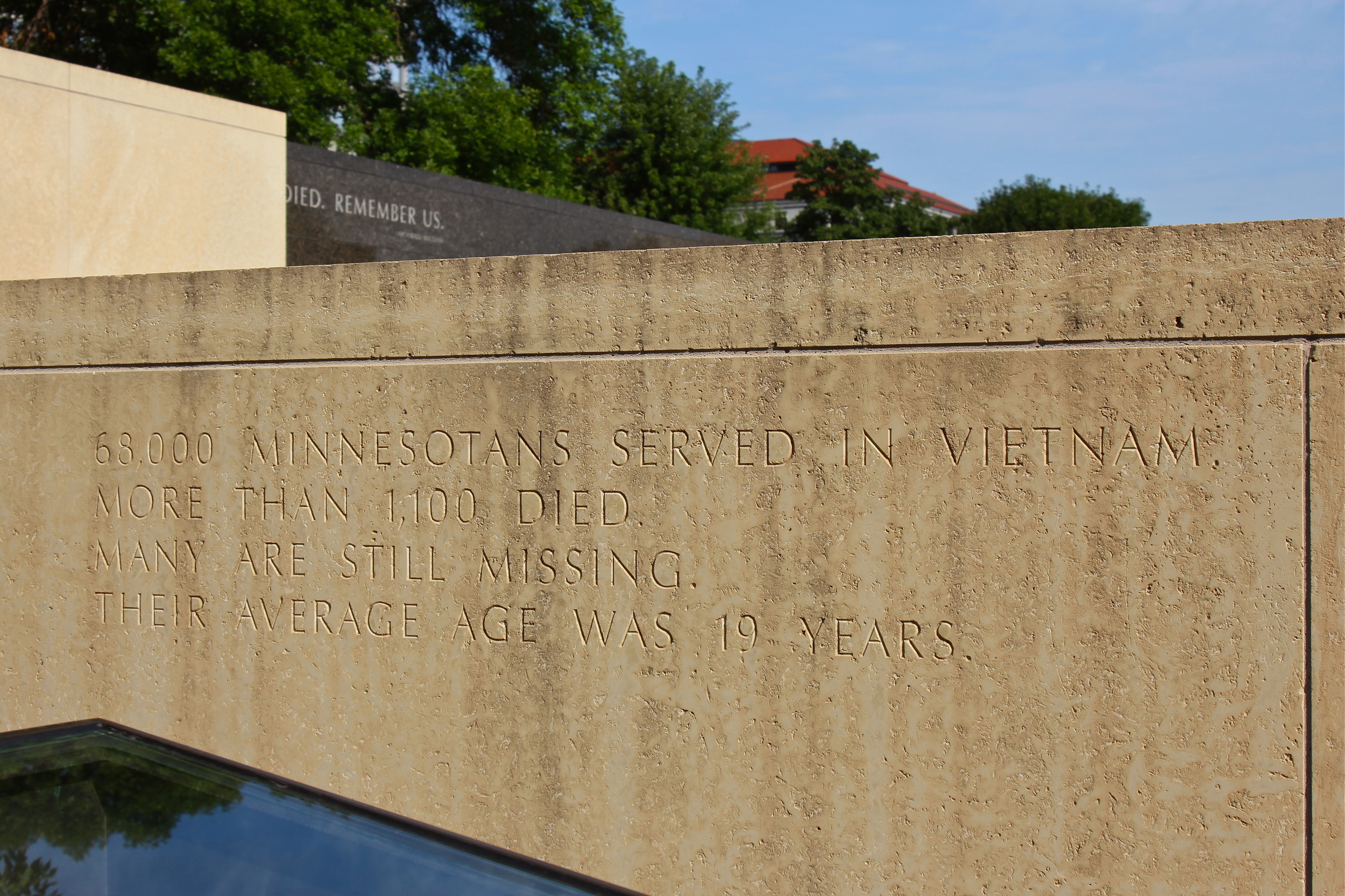
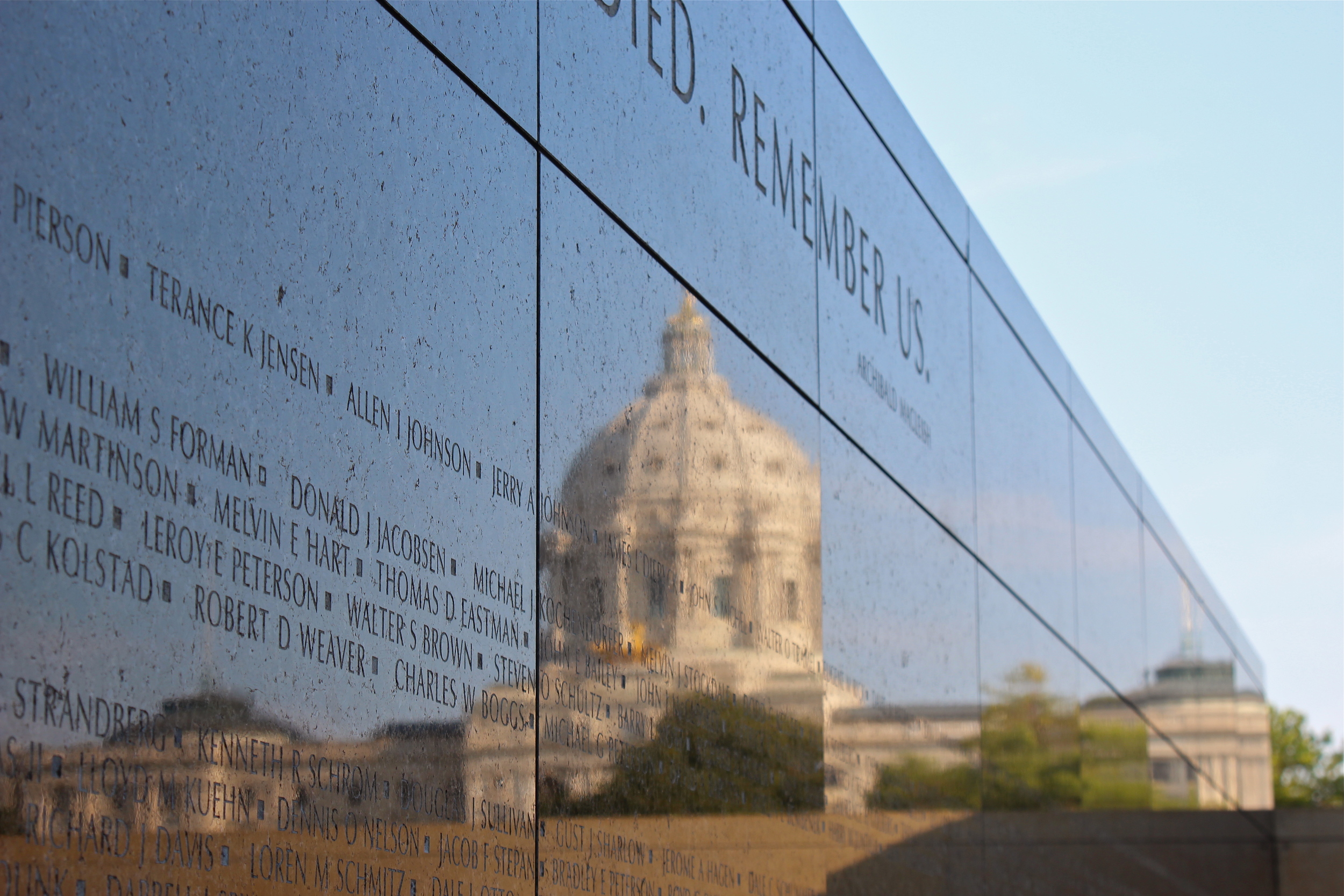
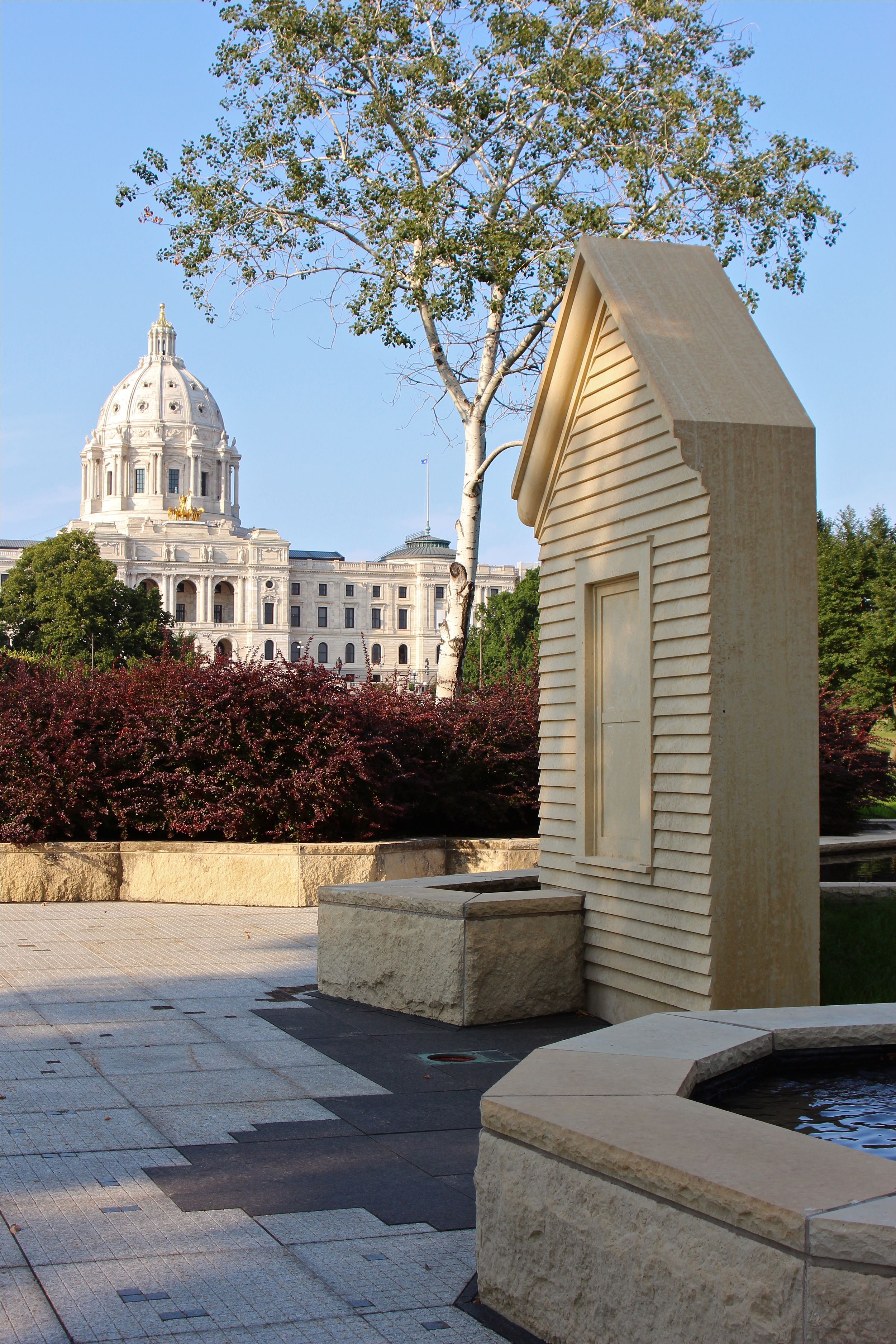

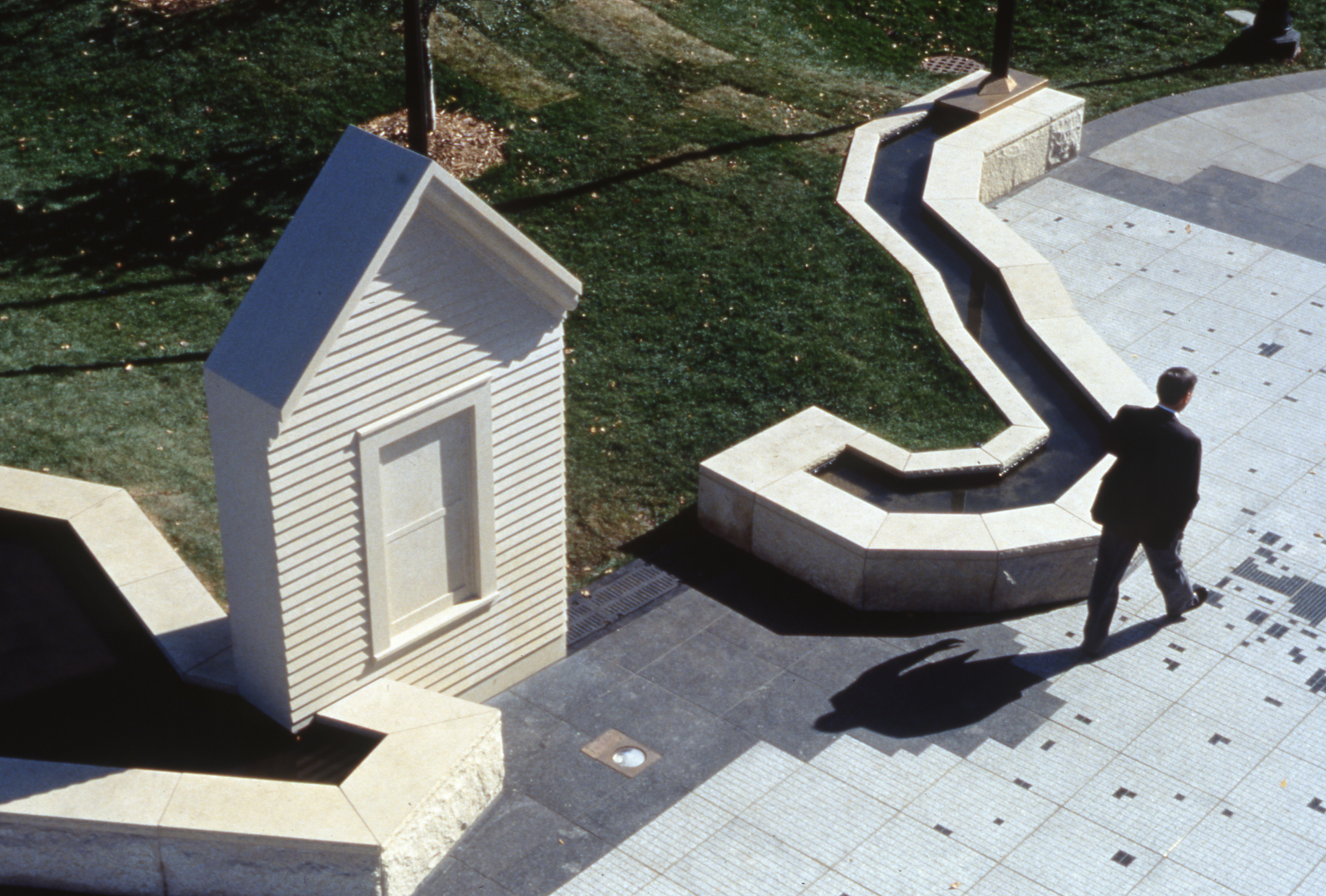
The jury for a national competition in 1990 selected this design, in collaboration with sculptor Stanton Sears, from a field of 217 submissions, to be built on the Capitol Mall. Unlike Maya Lin’s memorial in Washington, the strength of this project lies not in its shear number of names, but rather in its intimate reference to community. The project is scaled to accommodate very large gatherings as well as individuals seeking to spend time alone with their memories. The visitor approaches with a telescoping experience, encountering symbols of Southeast Asia, the United States, Minnesota, community, home, and finally servicemen. The plaza is surfaced with gray Minnesota granite, scored into 68,000 2”x2”squares, representing all those who served from our state. Within that field are placed green granite squares locating the hometowns of the 1,077 who died and the 43 who are still missing. The resulting pattern shows the extent to which the entire state was involved.
Full names are engraved on a green granite wall, anchored in place by Mankato limestone bookends, by date of casualty, forming a bar graph of America’s involvement in the war. Two pools formed from limestone, representing Minnesota’s two principal water bodies, mask ambient city noise, in conjunction with the rustling of poplar leaves. The site’s underlying colors are given by its red barberries, white-bark poplars, and blue junipers. The memorial, built with limited funding ($500,000, mainly from donors), is meant to last for centuries.
Construction: James Steele Construction
Photography: Tony Evans and Rich Laffin
